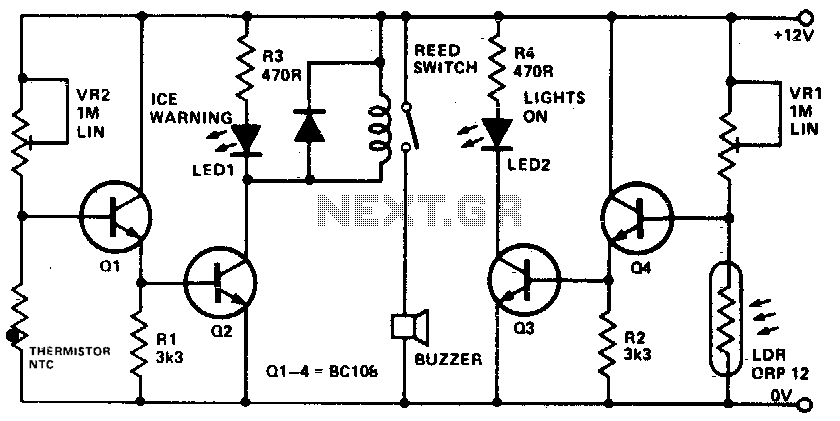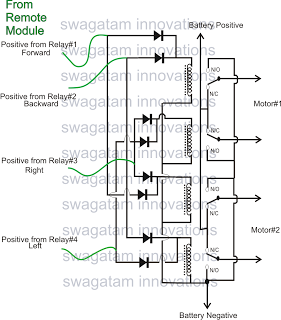
Police Car Lights with LEDs

This circuit simulates the flashing strobe lights of British police cars by alternating the lights. The IC1a functions as a square wave oscillator with an adjustable frequency controlled by VR1 to achieve the desired effect.
The circuit utilizes an integrated circuit (IC1a), which is typically a 555 timer or similar, configured in astable mode to generate a continuous square wave output. The frequency of this square wave can be adjusted using a variable resistor (VR1), allowing for customization of the flashing rate to closely mimic the distinct pattern of police car lights.
The output from IC1a is fed into a driver stage, which may consist of transistors or MOSFETs, to amplify the signal and drive the high-power LED strobe lights. These LEDs are arranged in a manner that reflects the traditional layout of police lights, often in a dual-color configuration (e.g., red and blue) to enhance visibility and realism.
The circuit may also include additional components such as resistors to limit current to the LEDs, capacitors for smoothing and stability, and possibly diodes for protection against reverse polarity. A power supply circuit is essential to provide the necessary voltage and current levels for the operation of the IC and LED lights.
In summary, this circuit effectively replicates the visual effect of police car lights through the use of a square wave oscillator, adjustable frequency control, and a suitable driver stage to illuminate high-power LEDs, making it an excellent tool for educational purposes or for use in model displays.This circuit is used to simulate the police car lights by alternating flashing strobes seen on British police cars. The IC1a forms a square wave oscillator having adjustable frequency with VR1 to give the best effect.
This square wave is bu.. 🔗 External reference
The circuit utilizes an integrated circuit (IC1a), which is typically a 555 timer or similar, configured in astable mode to generate a continuous square wave output. The frequency of this square wave can be adjusted using a variable resistor (VR1), allowing for customization of the flashing rate to closely mimic the distinct pattern of police car lights.
The output from IC1a is fed into a driver stage, which may consist of transistors or MOSFETs, to amplify the signal and drive the high-power LED strobe lights. These LEDs are arranged in a manner that reflects the traditional layout of police lights, often in a dual-color configuration (e.g., red and blue) to enhance visibility and realism.
The circuit may also include additional components such as resistors to limit current to the LEDs, capacitors for smoothing and stability, and possibly diodes for protection against reverse polarity. A power supply circuit is essential to provide the necessary voltage and current levels for the operation of the IC and LED lights.
In summary, this circuit effectively replicates the visual effect of police car lights through the use of a square wave oscillator, adjustable frequency control, and a suitable driver stage to illuminate high-power LEDs, making it an excellent tool for educational purposes or for use in model displays.This circuit is used to simulate the police car lights by alternating flashing strobes seen on British police cars. The IC1a forms a square wave oscillator having adjustable frequency with VR1 to give the best effect.
This square wave is bu.. 🔗 External reference





